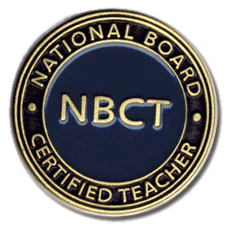A year into being an NBCT, I realize that I had no idea what I was getting myself into.
Going into it, I thought it would be a great way to improve my practice, gain the required professional certification in my state, and not least significantly, get a bonus for all of the hard work. There was also the somewhat less tangible prize that seemed to revolve around status and professionalism.
I first heard the call to “lift up the profession” in a presentation NBCT Jeff Charbonneau gave last spring. He spoke about teachers building up teachers and schools through positive talk. This past weekend I attended the Leadership Conference held by CSTP in Stevenson, Washington where I began to learn how to turn that talk into action.
Reflecting after the conference, I realize that National Board Certification is mainly about lifting up the profession. It is absolutely about making teachers more effective in the classroom, but it is also about empowering teachers to lead outside of the classroom. That less tangible piece I mentioned above is taking shape as I begin to participate in the NBCT network. I have a very different idea of what my role can be than I once did.
The journey that started with attending JumpStart and then working through and completing National Boards seems to have been but a prelude. As I come to the top of one small mountain I realize just how much farther the road goes. Traveling this road is a little daunting, but now I know I’m surrounded by a community of varied and vibrant NBCTs and organizations that support teachers.
Thanks to collaboration between WEA, OSPI, and CSTP, more and more teachers from Washington are achieving National Board Certification. If you haven’t already, consider following their lead – talk to an NBCT, you might be surprised what you find out. If you’ve taken that first step, take another – read the Teacher Leadership Skills Framework developed by CSTP. If you are farther down the road, tell your story. What doors has it opened up for you?

